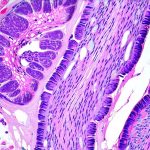The bladder, a remarkable organ responsible for storing and releasing urine, is surprisingly vulnerable to injury and inflammation. When its delicate lining – called the urothelium – becomes damaged, it can lead to a range of uncomfortable symptoms, from frequent urination and urgency to pain and even blood in the urine. While conventional medical treatments exist, many individuals are exploring natural approaches to healing this sensitive tissue. Understanding that true healing isn’t simply about symptom suppression, but restoring the underlying integrity of the bladder lining, is key to a holistic recovery journey. It’s crucial to remember that the timeframe for natural healing varies considerably depending on the extent and cause of the damage, individual health factors, and consistent adherence to supportive lifestyle practices.
The process of naturally repairing the bladder lining isn’t quick or easy; it demands patience, commitment, and a multi-faceted approach. It’s important to distinguish between managing symptoms and actually regenerating damaged tissue. Often, natural remedies focus on reducing inflammation and supporting the body’s inherent healing capabilities rather than immediately rebuilding lost cells. This is why timelines are often broad and individualized. Furthermore, it’s vital to consult with a healthcare professional to rule out serious underlying conditions and ensure that any natural therapies undertaken complement – rather than interfere with – necessary medical care. A truly effective strategy combines dietary adjustments, hydration strategies, targeted supplementation, stress management techniques, and potentially pelvic floor rehabilitation exercises. Considering the complexities of urological health, understanding how long medications may take to work can also be beneficial in managing expectations.
Understanding the Timeline & Influencing Factors
The question of “how long” is incredibly complex when it comes to bladder lining repair. There’s no one-size-fits-all answer because healing time depends heavily on what initially caused the damage. Mild inflammation from a temporary irritant – perhaps a spicy food or a short-term reaction to medication – might show improvement within weeks, whereas chronic conditions like interstitial cystitis (IC) or radiation therapy side effects can take months or even years of consistent effort. The severity of the initial injury also plays a significant role; superficial damage will naturally heal faster than deep tissue trauma. Individual health factors are paramount: someone with a strong immune system, good hydration habits, and an anti-inflammatory lifestyle will likely experience quicker healing compared to someone with underlying health conditions or poor nutritional status. Finally, consistency is crucial – sporadic attempts at natural remedies won’t yield the same results as a sustained commitment to holistic care.
Beyond these primary factors, other elements can impact the timeline. For example, continued exposure to irritants (like caffeine, alcohol, artificial sweeteners, or harsh soaps) will hinder healing. Stress and anxiety levels are also significant; chronic stress weakens the immune system and exacerbates inflammation. Similarly, a sedentary lifestyle can impede circulation and reduce the delivery of nutrients needed for tissue repair. Addressing these contributing factors is just as important as implementing specific healing protocols. It’s also worth noting that what constitutes “healing” is subjective – some individuals may aim for complete symptom resolution, while others focus on significant symptom reduction and improved quality of life. If damage is extensive, it’s important to understand how long cancer can take to grow in some cases, particularly if bladder cancer is a concern.
Identifying the Root Cause
Before diving into natural remedies, it’s essential to understand why the bladder lining is damaged in the first place. Common causes include:
- Infections: Urinary tract infections (UTIs) can irritate and inflame the urothelium.
- Interstitial Cystitis (IC): A chronic condition characterized by inflammation of the bladder wall, often with unknown cause.
- Radiation Therapy: Pelvic radiation for cancer treatment frequently damages surrounding tissues, including the bladder.
- Medications: Certain medications can have bladder irritant side effects.
- Chemical Irritants: Exposure to harsh chemicals in soaps, detergents, or personal care products.
- Autoimmune Conditions: Some autoimmune diseases can affect the bladder lining.
- Chronic Constipation: Can put pressure on the bladder and surrounding tissues
Accurately identifying the root cause guides treatment choices and helps prevent recurrence. A healthcare professional can perform diagnostic tests to determine the underlying issue. For example, if a UTI is suspected, a urine analysis is necessary. If IC is a possibility, more extensive testing might be required. Addressing the source of inflammation or irritation is fundamental to successful healing.
Dietary & Lifestyle Modifications for Bladder Health
Diet plays a monumental role in bladder health. An anti-inflammatory diet rich in whole foods can significantly reduce inflammation and support tissue repair. This generally involves:
- Hydration: Drinking plenty of water (6-8 glasses daily) helps dilute urine, reducing irritation.
- Eliminating Irritants: Reducing or eliminating common bladder irritants such as caffeine, alcohol, carbonated beverages, artificial sweeteners, spicy foods, citrus fruits, and acidic vegetables (tomatoes, oranges).
- Anti-Inflammatory Foods: Incorporating foods with anti-inflammatory properties like fatty fish (salmon, tuna), berries, leafy green vegetables, turmeric, ginger, and olive oil.
- Fiber Rich Diet: Preventing constipation by consuming a fiber rich diet to reduce pressure on the bladder.
Lifestyle adjustments are equally important:
- Stress Management: Practicing stress-reducing techniques like yoga, meditation, or deep breathing exercises.
- Regular Exercise: Engaging in moderate exercise to improve circulation and overall health.
- Proper Hygiene: Maintaining good personal hygiene to prevent UTIs.
- Pelvic Floor Rehabilitation: Strengthening the pelvic floor muscles can provide support and reduce bladder symptoms, but should be guided by a qualified professional. If you’re experiencing chronic issues, understanding how long it takes to cure prostatitis might also offer insights into managing related pelvic floor dysfunction.
Supportive Supplementation & Natural Remedies
While diet and lifestyle form the foundation of bladder healing, certain supplements and natural remedies may offer additional support. It is crucial to discuss these with your healthcare provider before starting any new supplement regimen. Some promising options include:
- D-Mannose: A naturally occurring sugar that can help prevent bacteria from adhering to the bladder wall, particularly useful for preventing recurrent UTIs.
- Quercetin: An antioxidant with anti-inflammatory properties that may reduce bladder inflammation.
- Aloe Vera: Some studies suggest aloe vera juice can soothe inflamed tissues and reduce bladder pain. (Use only certified organic, inner fillet Aloe Vera Juice)
- Marshmallow Root: Traditionally used to coat and soothe irritated mucous membranes, potentially providing relief from bladder discomfort.
- Vitamin C: An antioxidant that supports immune function and may help protect the bladder lining.
- Zinc: Important for tissue repair and wound healing.
These supplements aren’t cures, but they can complement a holistic approach to support the body’s natural healing processes. It’s vital to choose high-quality supplements from reputable brands. Herbal remedies should be used cautiously, as some may interact with medications or have contraindications. When considering natural approaches, understanding how long it takes for the bladder to heal from cystitis can help set realistic expectations.
It is also important to remember that healing takes time. Do not expect overnight results and remain consistent with your chosen approach. If symptoms worsen or do not improve after several weeks of implementing these strategies, seek medical attention. The body is incredibly resilient, and with the right support, it can often repair and restore damaged bladder tissue over time. However, patience, persistence, and a collaborative partnership with healthcare professionals are essential for success.





















